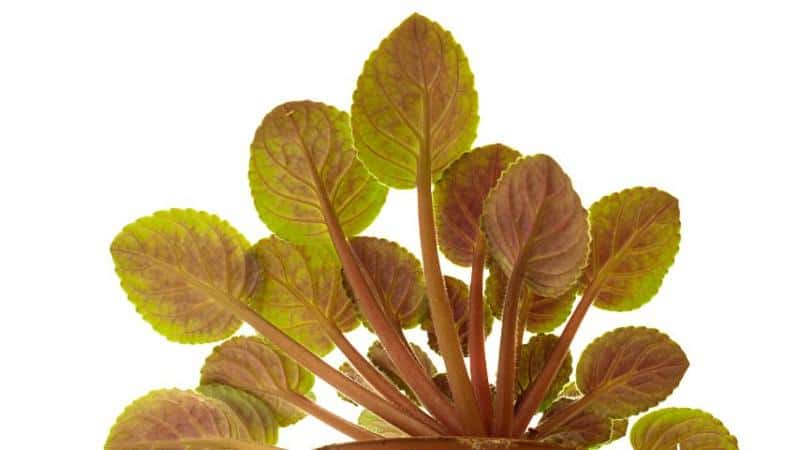I adore my collection of African violets with their clusters of blue, pink, purple, and white flowers and fuzzy, dark green leaves.
So imagine how unhappy I was when I saw that their leaves had started yellowing after a short vacation.
My mom was in charge of looking after all my houseplants, and after what felt like a cross-examination, I finally figured out what my mom did wrong.
If your African violet leaves have yellowed, I’ve got all the information on the causes and how you can fix it right here!
Table of Contents
What Causes African Violet Leaves to Turn Yellow?
Over-watering African violets is a common reason why African violet leaves turn yellow. Under-watering, insufficient or too much unnatural light, a lack of fertilizer, wet leaves, and a sap-sucking pest infestation are other causes. When the leaves also reach their 12-month lifespan, they also turn yellow.
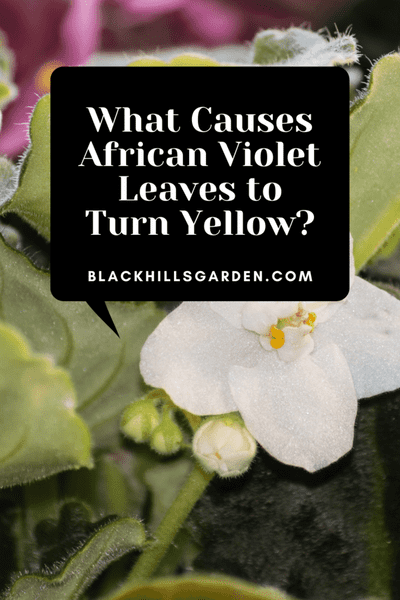
7 Causes: African Violet Leaves Turning Yellow
Turns out, there are quite a number of reasons why your African violet’s leaves can turn yellow.
Here’s what you may be doing wrong and some quick tips on how you can save your precious African violet houseplant:
Cause 1: Over-Watering
Over-watering plants, including the perennial African violet, is usually the primary reason that the leaves yellow.
When you over-water the plant, the soil becomes waterlogged, which also causes the roots to suffocate and rot if the overwatering issue isn’t fixed soon.
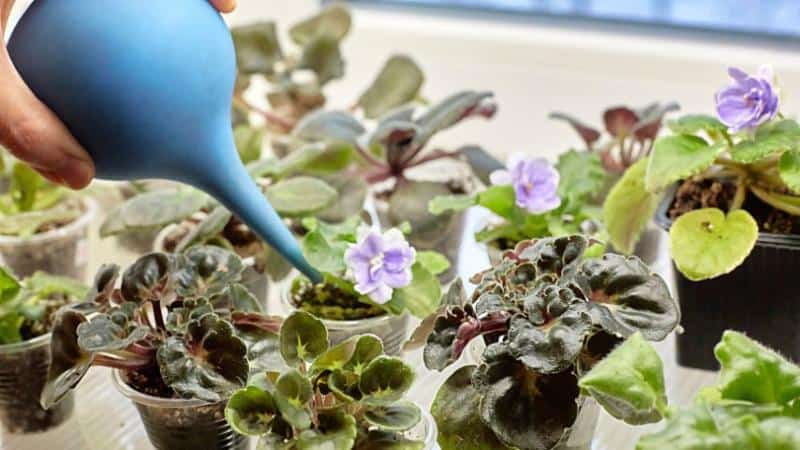
The leaves will turn yellow and may even develop ring spots because they aren’t getting the nutrients they need.
When you suspect that over-watering is the reason why your African violet leaves are turning yellow, insert your index finger into the soil.
If it feels soggy or drenched, you have confirmation that your plant has been over-watered.
Check the stems of the plant. If they are still healthy and firm, you just need the soil to dry out. So don’t give your African violet any more water.
After 1 week or so, check the soil again. If it feels dry when you insert your index finger into the soil, then you can water your African violet.
However, only water the plant so the soil is moist, and water again when the soil’s top 1-2 inches are dry.
If the stems have gone mushy, you’ll need to remove the African violet from the pot and assess the damage to the root system.
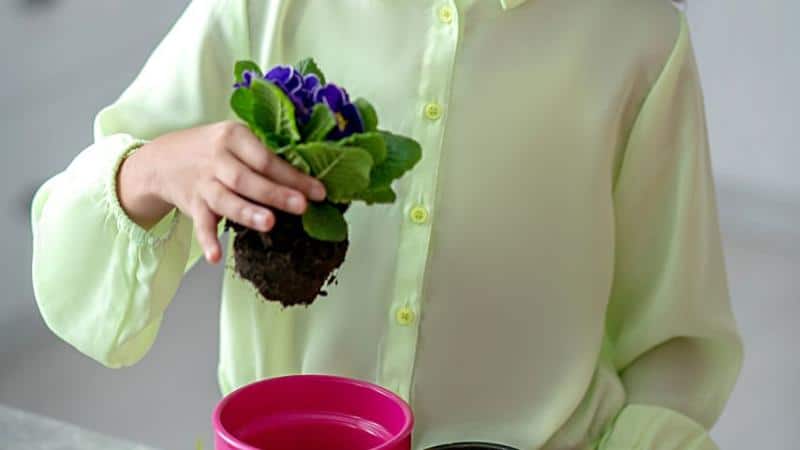
If the damage isn’t extensive, prune the damaged roots and repot the African violet in a new well-draining pot with the correct soil.
If root rot is too severe, I’m sorry to say, but it’s unlikely that your African violet will recover.
Cause 2: Lifespan of an African Violet
Did you know that the leaves on an African violet only live for about 12 months?
When it’s the end of their lifespan, you’ll find that the “old” leaves at the bottom will yellow before they wilt and fall off. This makes space for new leaves to sprout and grow.
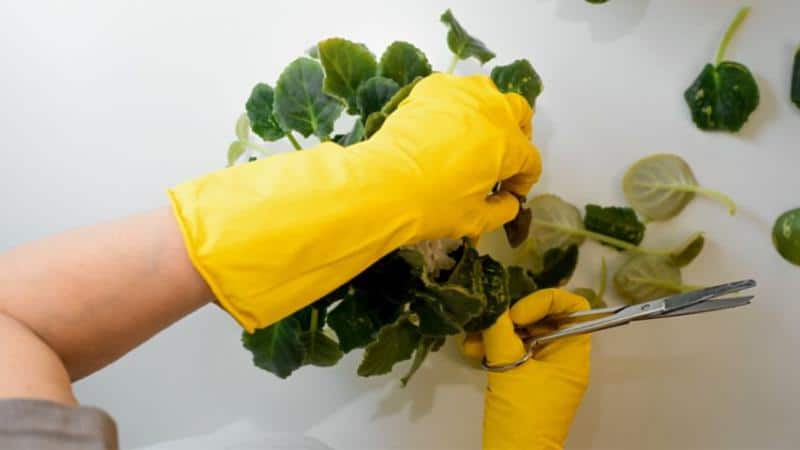
There isn’t anything to fix here since this is a natural process. You can remove the yellow leaves, and then let nature take its course.
Cause 3: Leaves Getting Wet
African violets don’t like their leaves being wet. In fact, they don’t tolerate it well at all.
And it seems that water that’s hotter or colder than the leaves have an even worse effect since the leaf cells collapse as a result of the warmer or cooler water.
So even if you accidentally sprinkle water on the leaves when watering the houseplant, the leaves will yellow. Sometimes, the leaves get a bleached appearance, or they develop ring spots or necrotic spots.

Remove the leaves that are yellow or bleached, and ensure you water your African violet correctly.
Water the soil, and only the soil. A watering can having a skinny and long spout ensures you water under the foliage.
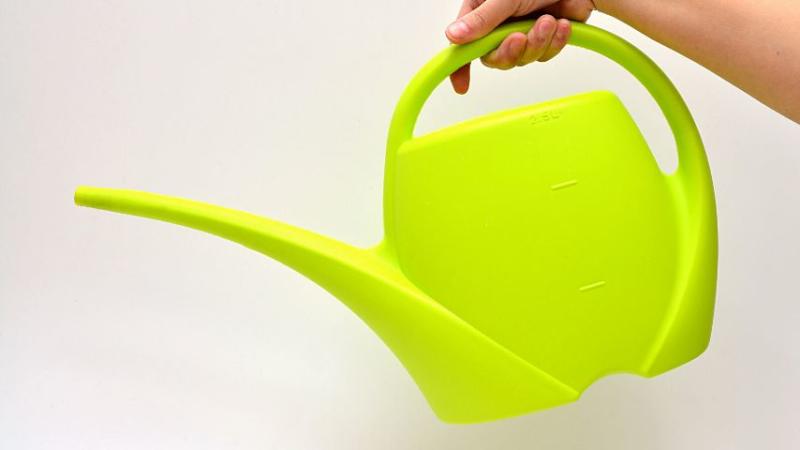
And it’s best to use water having room temperature.
Another option is bottom watering. Fill a container with water (an inch deep is perfect) and then place the pot with your African violet in the water-filled container.
Let the African violet soak up the water for about 20 minutes, and then remove the plant from the water-filled container.
Water from the top, ensuring no water splatters on the leaves, every now and again to help salt build-up flush out of the soil.
Cause 4: Insufficient or Unnatural Light
African violets are really picky about the kind and amount of light they get.
The leaves can yellow when the houseplant doesn’t get sufficient light or the light is unnaturally bright or dim.
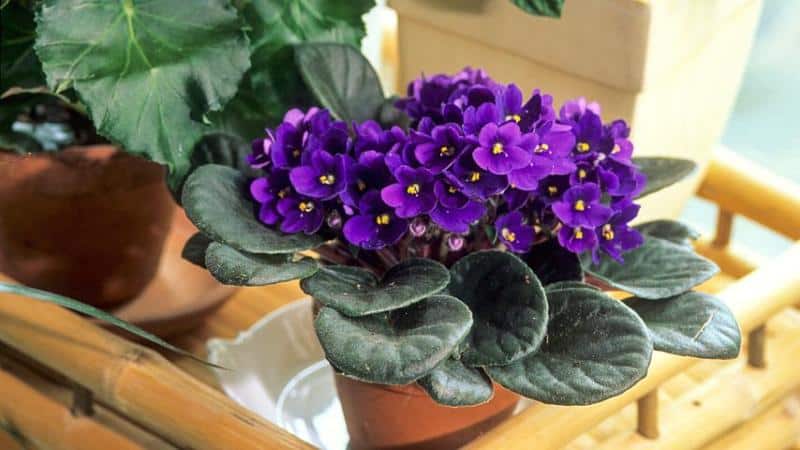
To remedy yellow leaves because of insufficient or unnatural light, move the African violet to a place where it gets bright, indirect light.
The best location for an African violet is 3 feet from a southeast or west-facing window if you live in the Northern Hemisphere.
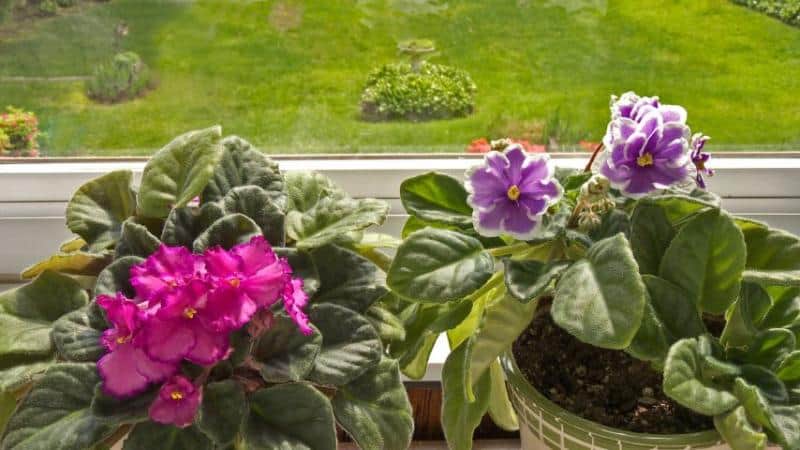
Cause 5: Not Enough Fertilizer
If an African violet doesn’t get sufficient nutrients, the leaves yellow.
Ensure you fertilize the African violet plant monthly during its growing season with a diluted fertilizer that’s suitable for the plant.
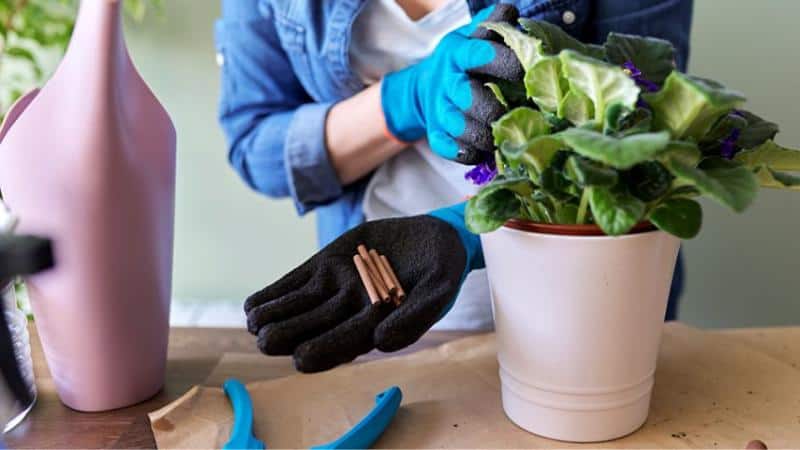
Cause 6: Pest Infestation
If your African violet has been infested with mealybugs, spider mites, aphids, thrips, or plant scale, the leaves can start turning yellow as these sap-sucking pests drain nutrients from the plant.
It’s best to remove the yellow African violet leaves and then spray your plant, including the leaf undersides and stem, with neem oil every week until the pests are gone.
Cause 7: Under-Watering
Just like over-watering can cause African violet leaves to turn yellow, so can the leaves yellow when you don’t water the plant sufficiently.
When the houseplant doesn’t get enough water, the leaves dehydrate, yellow, and start to shrivel or droop.
The best way to fix under-watering is to give your African violet room temperature water — just enough so the 1-2 inches of the topsoil is moist.
Check the soil the next day, and only water if it’s topsoil’s dry.
Frequently Asked Questions about African Violet Turning Yellow
Should you remove yellow leaves from African violets?
When you see that the leaves on your African violet plant start to yellow, it is recommended to remove these as soon as possible. Removing the yellow leaves helps ensure that the rest of your plant remains healthy or has a better chance of recovery.
Why are my African violet’s bottom leaves dying?
It is likely that the bottom leaves of your African violet are dying because you’ve over-watered it. The soil and root system become waterlogged. Nutrients can’t make their way up from the soil, and eventually, the bottom leaves of the African violet will die after they’ve turned yellow.
Conclusion On What Causes African Violet Leaves to Turn Yellow
After asking my mom lots and lots of questions, it turns out she over-watered my precious African violets AND she watered from the top.
It took quite a lot of pruning of the yellow leaves, checking the plants for root rot, and repotting some plants before nearly all of my African violets recovered.
Sadly, I lost two plants to severe root rot.
The best way to ensure leaves don’t yellow is through prevention — meeting the plant’s care requirements.
If you have someone plant-sitting (aka house-sitting) for you, make sure they know how to take care of your African violets!
Read about the best plants for south-facing gardens next.

